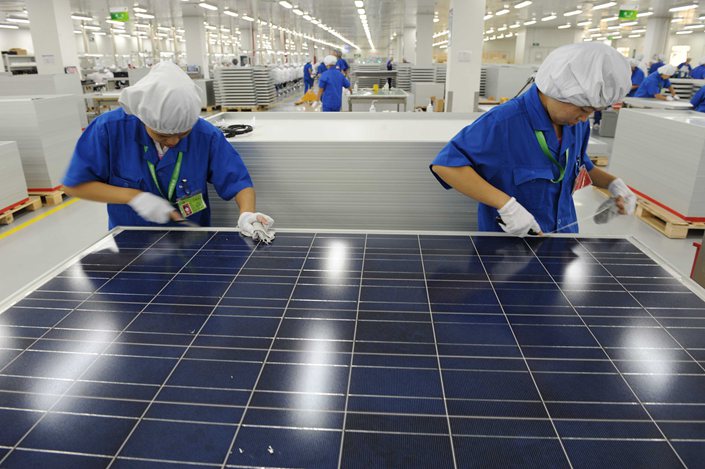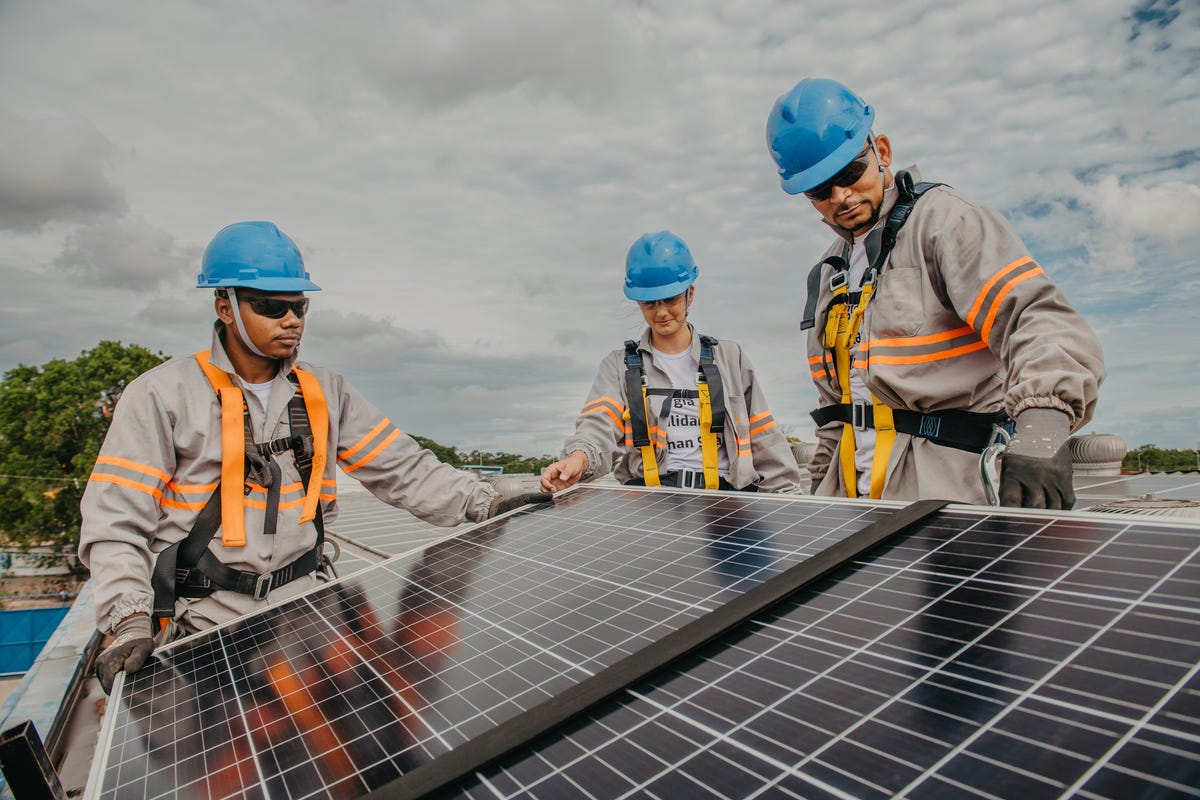Everything about Solar Panel Installation Virginia
Everything about Solar Panel Installation Virginia
Blog Article
Solar Energy Companies Virginia: Lumina Solar Focuses On Supplying Advanced Photovoltaic Solutions For Residences And Services
History and Establishing
Have you ever questioned how a solar panel company springs from a mere spark of motivation into a powerhouse of renewable resource? It typically starts with a vision-- one sustained by a blend of development, decision, and a pinch of serendipity. The journey of lots of solar business mirrors the advancement of the innovation itself: from large, inefficient panels to sleek, high-efficiency marvels utilizing the sun's bounty.
The Early Days
In the late 20th century, when solar power was still a niche idea, leaders planted seeds for what would become a worldwide motion. Envision a small workshop filled with curious engineers, relentlessly explore photovoltaic cells. Their passion was palpable, typically driven by a desire to fight climate change and minimize reliance on fossil fuels.
One such anecdote has to do with a founder who, inspired by a camping journey, realized that even in remote locations, the sun could power important devices. This basic observation stimulated a business's objective to democratize access to clean energy.
Establishing Principles

- Innovation: Continually pushing the boundaries of solar technology to enhance efficiency and durability.
- Sustainability: Dedicating to eco-friendly manufacturing and minimizing carbon footprints.
- Ease of access: Making eco-friendly energy solutions economical and useful for daily users.
Turning points in Development
| Year | Secret Occasion |
|---|---|
| 1985 | Company founded in a little garage, concentrating on research study and development. |
| 1995 | Very first business solar panel item introduced, gaining local attention. |
| 2005 | Expanded to international markets, welcoming worldwide renewable resource objectives. |
| 2015 | Presented advanced photovoltaic panel innovation with boosted energy conversion. |
Isn't it remarkable how these incremental actions, typically overlooked, form the energy landscape today? The solar panel business story is not practically technology; it's about a ruthless quest for a brighter, cleaner future.

Innovations in Solar Panel Technologies
Ever discovered how some photovoltaic panels gleam brighter and last longer? It's not magic; it's the science of photovoltaic performance. Modern solar panel companies invest heavily in innovations like bifacial cells, which catch sunlight from both sides, boosting energy harvest without broadening more info roof area. Have you ever wondered why some panels carry out much better on cloudy days? That's due to advances in thin-film solar innovation, which grows under diffused light conditions.
Item Variations Tailored to Distinct Requirements
One size never ever fits all. Solar panel providers now use:
- Monocrystalline panels for optimum effectiveness and streamlined looks, perfect for space-constrained rooftops.
- Polycrystalline panels, which offer a cost-efficient option without sacrificing too much output.
- Building-integrated photovoltaics (BIPV), merging solar tech perfectly into architectural elements like windows and exteriors.
Picking the right product isn't practically upfront expense; it has to do with matching your environment, energy objectives, and long-term savings. For example, homes shaded by trees need panels that stand out in low-light scenarios, something many neglect until energy costs climb suddenly.
Technical Tips for Optimum Selection
- Evaluate the temperature coefficient-- lower values indicate panels lose less performance on hot days.
- Look for panels with boosted anti-reflective finishings to make the most of light absorption.
- Think about the panel's service warranty not simply for defects, but for ensured power output over years.
- Do not ignore the significance of the inverter innovation coupled with the panels; it can make or break your system's performance.
Beyond Panels: Emerging Patterns
Imagine photovoltaic panels that change their angle immediately to chase the sun-- tracking systems are becoming more available, increasing yield substantially. Or solar tiles that blend invisibly into your roofline, changing your home into a silent, self-dependent power generator. These innovations are reshaping what a solar panel business uses-- not just items, however incorporated energy solutions.
Market Presence and Global Operations
Ever wonder why some photovoltaic panel companies appear to grow up in every corner of the globe while others hardly make a ripple? The difference lies not simply in innovation but in mastering the art of browsing diverse markets. Expanding globally is like planting seeds in various environments-- you must understand each environment's distinct conditions to prosper.
Take, for example, the elaborate dance of logistics and supply chain management. Shipping panels midway throughout the world isn't almost range; it's about timing, custom-mades, tariffs, and adjusting to regional need fluctuations. A business with robust global operations anticipates these variables, ensuring panels arrive on schedule without inflating costs. This foresight is no little feat and typically separates industry leaders from followers.
Secret Methods for Expanding Market Presence
- Localized manufacturing: Establishing production hubs near target markets reduces shipping delays and import intricacies.
- Strategic partnerships: Teaming up with local firms accelerates market penetration and builds trust.
- Adaptive item style: Customizing solar panel tech to weather, sun intensity, and facilities subtleties enhances efficiency and acceptance.
What about the human aspect? Photovoltaic panel business running globally need to reconcile cultural differences and regulatory nuances without forgeting their core mission. What works in a sun-drenched desert might falter in a damp coastal region. Sometimes, the most ingenious solution is simply listening-- soaking up regional insights to improve innovation and approach.
Specialists typically encourage a phased rollout instead of a shotgun growth. Why run the risk of overextension when determined growth builds sustainable momentum? Scaling carefully suggests balancing aspiration with functional strength - Solar Companies in Virginia. In the race for sustainable energy dominance, persistence can be as important as speed.
Environmental Effect and Sustainability Practices
When solar panels initially emerged, lots of presumed they carried zero environmental luggage. Nevertheless, the truth is more nuanced. The production of photovoltaic cells involves unusual earth metals and energy-intensive processes, which can leave a substantial carbon footprint before the panels even reach rooftops. Yet, the real environmental cost depends greatly on the sustainability practices utilized by the solar panel company throughout the lifecycle of their items.
How frequently do we stop briefly to consider what occurs to photovoltaic panels at the end of their beneficial life? Unlike batteries or electronics, photovoltaic panels can last 25-30 years, but disposal and recycling paths stay underdeveloped in many areas. A company committed to minimizing ecological harm will have a robust plan for recycling photovoltaic materials, salvaging important silicon, glass, and metals to avoid land fill build-up.
Key Sustainability Strategies
- Utilizing low-impact production strategies that lessen water and energy consumption.
- Executing closed-loop systems to recycle production waste back into brand-new panels.
- Taking part in transparent supply chain audits to make sure ethical sourcing of basic materials.
- Designing panels for easier disassembly to help future recycling efforts.
It deserves keeping in mind that some solar business have actually originated innovative methods, such as integrating biodegradable components or using less hazardous chemicals throughout fabrication. This not just reduces environmental stress however also sets a precedent for the industry. The question stays: can the solar market truly pivot towards a circular economy design without sacrificing efficiency or affordability?
Specialist Tips for Examining Sustainability
- Inquire about the business's commitment to carbon-neutral production and whether they balance out emissions.
- Investigate if they partner with certified recycling facilities committed to solar panel waste.
- Try to find transparency reports detailing ecological effects and sustainability goals.
- Consider the longevity and service warranty of panels as an indirect measure of resource performance.
In the end, selecting solar power must mean more than just slashing electricity expenses; it has to do with nurturing a future where energy is gathered properly and waste is attentively managed. Solar panel companies that welcome this philosophy not only brighten homes however also cast a brighter light on sustainable development.
Report this page